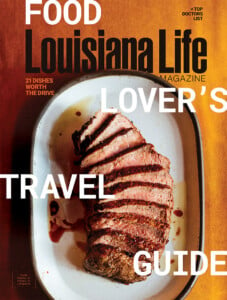Steak Three Ways
Classic Steak Dishes

There is nothing like the rich taste of beef steak. It is a treat when you eat it. And there are many classic dishes that have been developed to bring out its goodness. With classics, knowing what you like and what to expect with different dishes is part of the experience. When you get what you are anticipating, you are happy and satisfied.
But we don’t always want the same thing. Sometimes we want to emphasize the unctuous side of beef, so a beef stroganoff with its creamy sauce may fill the bill. Other times, a little acid will bring out a more balanced bite, so a marinated skirt steak or a steak salad will be your choice.
Make sure that your meat comes from a good source that you trust. It doesn’t have to be prime, which is considered the top grade of beef because it comes from young cattle and has the most marbling. Choice, the second grade, is less fatty and has a beefy taste in the muscle. You decide if you want to experiment with grass-fed beef, which has a strong beefy taste, but less fat. Try to avoid animals treated regularly with antibiotics and with growth hormones.
When you are cooking a steak dish, all the accompaniments should be top drawer also. This isn’t the time to skimp on ingredients. Use good butter with a high fat content. Get fresh peppercorns, not the ones that have been hidden in your pantry for three years. If you are going to indulge in a beef dish, do it with your eyes open and your appetite ready.

Butter-basted Ribeye
1 ribeye
Salt and pepper
2 tablespoons peanut oil or other high smoke point oil
4 tablespoons butter
2 tablespoons rosemary leaves
Select your ribeye. Salt and pepper the steak on both sides. Place the oil into a cast iron pan and heat on high. When the oil is very hot, place the steak into the pan. Cook on high heat, turning regularly. (Turning helps the crust form.)
When the steak is close to being done, add 1 tablespoon of high fat butter into the pan. As it melts, tilt the pan to pool the butter. Using a spoon, scoop up the butter and begin basting the steak. Add the rosemary leaves to the pool of butter.
Continue to baste the steak. Turn the steak as you are basting to keep cooking it and developing the crust. Add more butter, 1 tablespoon at a time, basting continuously. Serve when it reaches the degree of doneness you prefer. Serves 2 to 4 depending on the size of the ribeye steak
Steak au Poivre
4 filet mignon medallions
Salt
¼ cup whole black peppercorns
3 tablespoons vegetable oil
1 tablespoon unsalted butter
2 thyme sprigs
1 medium garlic clove, minced
½ large shallot, minced
2 tablespoons brandy or cognac
¾ cup chicken stock
¾ cup crème fraiche
2 teaspoons Dijon mustard
Preheat oven to 375 F. Salt medallions on both sides and refrigerate for 30 minutes.
Place peppercorns into a self-sealing plastic bag, remove the air and pound it with a rolling pin to crack the peppercorns. Place half in the bottom of a shallow pan. Reserve the rest for later. Press one side of each medallion into the pepper so that it coats each medallion.
Heat the oil in the pan. Sauté the pepper side of the medallions for 3 to 5 minutes. Add garlic and shallot and sauté for 5 minutes. Carefully turn over the medallions with tongs. Be sure to not break the pepper crust. Cook for another 3 minutes. Add butter and thyme and cook until the steaks have reached the desired doneness. You can baste the steaks as they cook. Remove from the pan.
Add the garlic, shallots, and remaining peppercorns to the pan. Cook, stirring gently, until the shallots are soft, about 2 to 3 minutes. Add brandy to the pan and stir, deglazing the flavorful bits sticking to the pan. Cook to evaporate most of the brandy, leaving about 3 tablespoons. Remove the thyme and discard.
Add stock and crème fraiche and stir. Cook until the cream sauce forms a coating on the back of a spoon. Add the Dijon mustard. Stir. Add the steaks back to the pan, pepper crust up. With a spoon, glaze the medallions and then serve them on warmed plates with spoonsful of sauce over each medallion. Serve immediately with well-buttered mashed potatoes. Serves 4
Flank Steak Salad
1 pound of flank steak
Salt and pepper
2 tablespoons oil
1 large head of romaine lettuce (you can add a few whole basil leaves to kick up the flavor of the greens, but you need sturdy greens for this salad — no spring mix.)
1 cup cherry tomatoes, cut in half
¾ cup dried figs, quartered
1 cup buttered croutons
Dressing
2 tablespoons Dijon mustard
¼ cup olive oil
2 tablespoons good balsamic vinegar
1 clove of garlic, minced
¼ teaspoon salt
Salt and pepper the flank steak on both sides. Slice the steak into thin slices (about ½-inch wide) against the grain with a very sharp knife.
In a cast iron skillet, place the oil and begin to heat the skillet. When it is hot, add the meat and allow it to cook on all sides by using tongs to keep the steak moving. Be careful not to dry out the meat. When cooked, set the meat on a plate and allow to rest and come to room temperature.
Assemble the salad in a large wooden bowl. Tear the romaine lettuce and place it in the bowl with the tomatoes, figs and the cooled, cooked steak.
To make the dressing:
Place all of the ingredients into a jar, and screw on the lid and shake well. Pour the dressing onto the salad.
Just before serving, toss the salad. Add the croutons at the last minute and re-toss. Serve immediately. Serves 4
